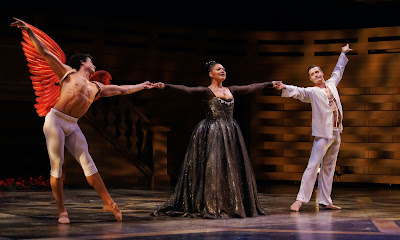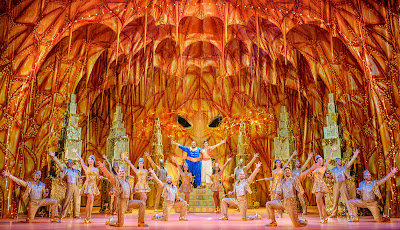Reviewed by James Karas
The First Metis Man of Odessa is a beautiful, autobiographical play written and performed by Matthew MacKenzie and Mariya Khomutova. He is a Métis from Edmonton and she is a Ukrainian from Odessa and the play tells the true story of the courtship, love and marriage in Ukraine and their settlement in Canada. The Russian invasion of Ukraine forms a riveting part of the play as the couple describes their experiences during that war and its consequences for Khomutova and her friends. It is a captivating story and what follows will be nothing but praise for a marvelous night at the theatre.
MacKenzie went to Ukraine to interview people and met the beautiful and cultured actor Mariya Khomutova. They seemed like an unlikely pair but acquaintance led to courtship which lasted for many months of trans-Atlantic communication. This led to the real thing – love followed by trans-Atlantic trips, consummation and pregnancy. The only way to ensure admission to Canada and health insurance was for Matthew and Mariya to get married in Odessa. They do and after some misadventures she comes to Canada. Their son is born and her mother comes to look after the baby.
Mariya Khomutova amd Matthew MacKenzie. Photo: Dahlia Katz
The story they tell is moving, funny, fascinating and wonderful. I am not giving any details deliberately because it should be enjoyed as they tell it. MacKenzie is a writer and he tells his side of the story matter-of-factly and we do not expect more from him Marya is an actress and she speaks with flair and an affecting emotional range.The brutal Russian invasion is always a part
of their lives and we get glimpses of direct experiences and stories of the
lives of their friends in what can only be seen as a crime against humanity.
The stage has only two chairs which they use very effectively with superb lighting. The lighting and projections are used to express or emphasize stress, confusion, emotional distress and motion. Kudos to Daniela Masellis for Production Design and Amelia Scott for Projection Design.
Director Lianna Makuch must have had her hands full having to direct two people who wrote their own story and, even tougher, were playing themselves. She controls the pace of the performance, evokes humour and leads to the climax of the play about the relationship between the two people.
_________
The First Métis Man of Odessa by Matthew MacKenzie and Mariya Khomutova opened on May 9 and continues until May 19, 2024, at the Young Centre for the Performing Arts, 55 Tank House Lane, Toronto, Ontario, M5A 3C4. www.soulpepper.ca.
.jpg)

















%20-%202024%20Tarragon.jpg)